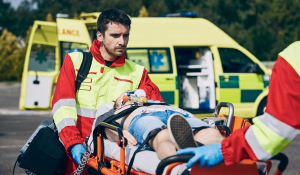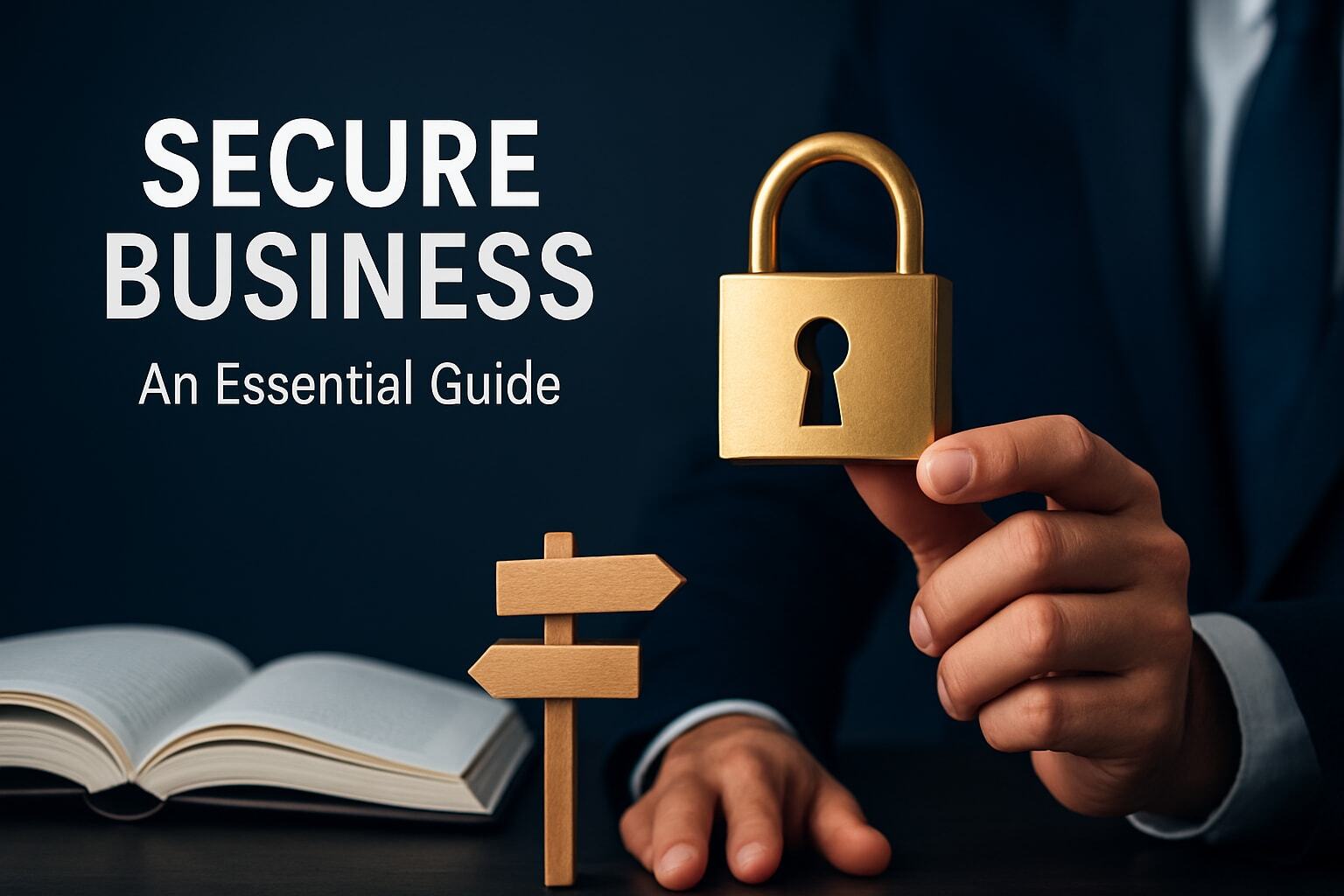Emergency Planning Process Steps: Safeguarding Lives and Communities
An organized disaster preparedness strategy can be life-saving in a fast-paced world with many uncertainties. The unexpected can occur at any time from natural disasters and unexpected events. This is why it's crucial to take a proactive approach in the emergency planning process to ensure you are secure and contribute to the strength of your community.
This comprehensive guide will help you understand the critical steps in the emergency management planning process in detail, highlighting their importance and the significance of being prepared in preparing for potential emergencies or disasters. Let's get into the realm of emergency management and learn how it plays an essential role in minimizing the effects of unplanned incidents.
Ensuring Safety and Minimizing Losses
The safety of you and your family members is of paramount importance. An emergency plan can help you make quick and informed decisions and reduce the chance of losing lives. It's not just about people but about bringing communities together to prepare for the possibility of emergencies. The collective effort helps ensure everyone's health and strengthens bonds between neighbors.
It doesn't matter whether it's your home, business, or local community. A comprehensive emergency management plan can help reduce financial losses and protect critical assets. If everyone knows their role and responsibility, responding to emergencies is more efficient, leading to rapid recovery.
Two Essential Emergency Planning Process Options
Two options are evident to be prepared for emergencies: Emergency Cards and Emergency Vaults.
- Emergency cards provide peace of mind for your family and yourself. They guarantee you'll receive the assistance you require in an emergency, and your family will be immediately contactable. The cards display vital details like your child's blood type, allergies, medications, and emergency contact numbers. Emergency cards are constructed of durable materials that can withstand any circumstance.
- Emergency Vaults offers a digital solution. They can keep important documents accessible to family members from any location. The Emergency vaults include two emergency Cards for you and a family member, so important information is always available.
The Importance of Adaptability
Emergencies can take on a variety of types, and having an emergency plan that can adapt to different situations is crucial for preparing. Your emergency plan should be a constantly updated document that is regularly reviewed and updated to ensure that it remains relevant regardless of changing threats.
Start Planning Today
Don't just wait for an emergency to occur; begin planning now. By taking proactive steps, you're securing yourself and your loved ones and helping to build your community's strength. It's a continuous commitment to prepare, and there is always time to start.
Remember, "By failing to prepare, you are preparing to fail." With the right plan, you can face the emergency planning process steps.
- Risk Assessment
- Setting Priorities and Objectives
- Formation of the Planning Team
- Plan Development
- Resource Allocation and Identification
- Training and Exercises
- Communication Planning
- Coordination with External Partners
- Testing and Evaluation
- Plan Maintenance and Updates
- Public Education and Awareness
- Documentation and Record-Keeping
- Response and Recovery
1. Risk Assessment
The first step of the emergency planning process is to conduct a complete risk assessment. This involves identifying and evaluating the potential hazards and risks for your workplace or place of business. These risks cover many risk factors, including natural disasters such as hurricanes, earthquakes, floods and technological events like chemical releases and power outages. Additionally, human-caused catastrophes like cyberattacks and terrorist attacks must be considered. A thorough evaluation of these risks forms the basis of the emergency management process.
2. Setting Priorities and Objectives
Following the risk assessment, the next step is establishing clear goals and priorities for your plans in an emergency. What do you hope to accomplish in the event of an emergency? The goals could vary from protecting lives and ensuring employees are safe to securing critical infrastructure and reducing economic losses. These goals are used as a guideline to create the most effective plan for an emergency.
3. Formation of the Planning Team
A complete emergency plan is a group of dedicated people accountable for its design and execution. The team should comprise members from various departments or institutions, including emergency responders, public health officials, and community leaders. Collaboration and expertise are vital for this phase of the emergency response strategy.
4. Plan Development
Once the planning team has been put in place, The next step is formulating the emergency plan. The plan should include all aspects of emergency preparation and response, such as strategies for communication, the distribution of resources and evacuation procedures, and attempts to recuperate. Adapting to various situations is essential to ensure the plan's effectiveness in any system. This is why the requirement for a comprehensive emergency plan is necessary.
5. Resource Allocation and Identification
Identifying the resources needed to implement the plan efficiently is vital in emergency planning. This includes equipment, personnel supplies, and facilities. The distribution should follow the priorities in the second step and ensure that the essential elements are always available.
6. Training and Exercises
The training of staff, as well as conducting routine drills and exercises, are essential to plan for emergencies. This ensures that everyone knows what role they have and what their roles are in the event of an emergency. These drills inform participants about the plan and help identify weaknesses that require attention to improve the ability to respond.
7. Communication Planning
Clear communication protocols, internally and externally, are crucial to a well-constructed emergency action plan. The program must ensure that the communications systems are robust and functioning in the event of an emergency. Establishing the process of disseminating information to the public and other parties is essential to ensure everyone is informed and in order.
8. Coordination with External Partners
Collaboration with external organizations, including local governments, businesses nearby, and community groups, is essential in the emergency planning process. Forming partnerships and agreements for mutual aid and assistance during times of emergency increases the local community's overall resilience and ability to respond.
9. Testing and Evaluation
Regularly reviewing and testing the emergency response plan is essential to discover areas for improvement in emergency plan response. Conducting post-action reviews following real crises is necessary to assess the effectiveness of emergency responses and modify the emergency response plan.
10. Plan Maintenance and Updates
Emergency plans should be living documents that are regularly updated to reflect changes in the risk planning resources, risks, and organizational structures. Ensuring the program remains current and effective throughout time is a constant commitment.
11. Public Education and Awareness
Informing the public and others about evacuation routes, emergency plans, and security protocols is crucial to preparing for emergencies. Instilling awareness and practice within the community can increase the effectiveness of the whole process.
12. Documentation and Record-Keeping
The accuracy of documents for every aspect of the plan for emergencies, such as inventory of risk assessments, resources such as training records, and incident reports, is crucial in emergency planning. These documents are accountable and allow for continual improvement.
13. Response and Recovery
In an emergency, it is time to start implementing the emergency plan. Follow the guidelines designed to meet immediate requirements. Following this, you can enter the recovery phase, which allows you to resume regular operations and address long-term consequences.
Conclusion
Emergency planning is an example of preparedness and resilience in a constantly changing world of uncertainty. It's not a choice; it's necessary to protect yourself from unpredictability. This document's comprehensive emergency planning process will pave the way for a more secure future for us and the generations to come.
FAQs
1. What are the steps to emergency planning?
The five essential steps of the emergency planning process are risk assessment, setting goals and priorities, team formation, developing plans, and identifying and allocating resources.
2. What are the 3main goals of emergency plans?
The three main objectives of emergency plan response are to safeguard life, guarantee safety, and limit the economic loss that occurs in an emergency and afterward.
3. Why is it important to plan for emergencies?
It is vital to plan for emergencies because it assists communities and organizations in being prepared for, responding to, and recovering from natural disasters and crises while lessening their impact.
4. Why is it essential to have a family emergency plan?
A family emergency plan is crucial to ensure the family is prepared to handle emergencies and remain secure during stressful times. It helps to create a sense of security and preparedness.
5. What are the 4 main parts of an emergency plan?
An emergency plan typically comprises four significant parts: risk assessment goals and priorities, planning, and identifying and allocating resources.

Michael Lester
I spent years flying Marine Corps combat missions believing I understood America’s role in the world. Today I work in national security and cybersecurity, helping organizations understand risk, resilience, and the systems we rely on. My writing continues the same mission—bringing clarity to complex issues and inviting people to look past slogans so we can understand who we are, what we do in the world, and why it matters.



